What is Programmatic SEO (pSEO)?
Programmatic SEO creates hundreds or thousands of web pages using templates and data. Instead of writing each page by hand, you build one template and fill it with different data to make many similar pages.

Think of it like a mail merge for websites. You create one letter template, then use a spreadsheet to generate personalized letters for different people. Programmatic SEO works the same way but for web pages.
Companies use pSEO to target many similar search queries at once. For example, a travel site might create pages for "hotels in [city name]" for every major city in the world.

How Does Programmatic SEO Work?
The process involves four main steps:
You identify search queries that follow the same format. Examples include "best [product] for [use case]" or "[service] in [location]."
You gather information to fill your templates. This might come from databases, APIs, or spreadsheets. The data should be accurate and useful for visitors.
You create page layouts that work for all variations. The template includes placeholders where data gets inserted automatically.
Your system combines templates with data to create finished pages. Most companies use content management systems or custom scripts for this step.
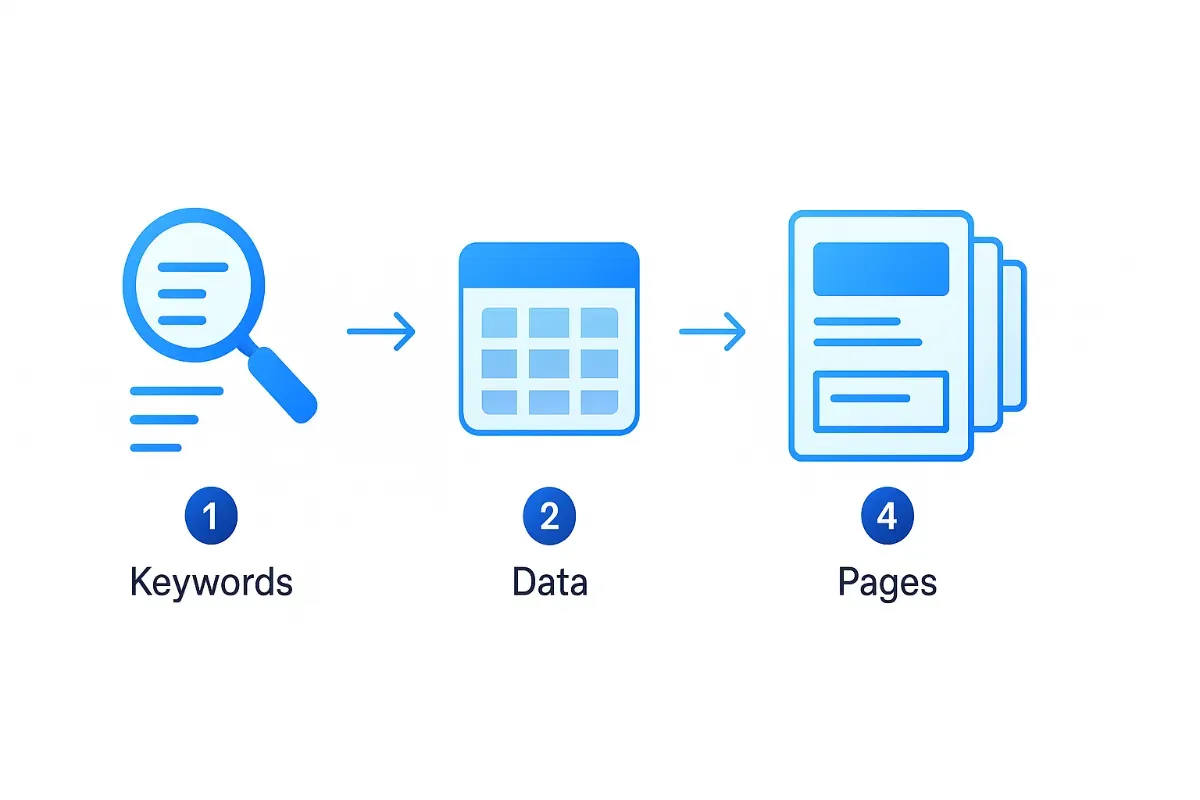
When to Use Programmatic SEO
Programmatic SEO works best in specific situations:
You have access to structured data that people search for. Real estate listings property details, and product catalogs work well.
People search for information using predictable formats. Location-based queries and comparison searches often follow patterns.
Building pages individually would require months or years. pSEO makes sense when you need hundreds of similar pages.
You can rank for these keywords without facing established giants. Look for gaps where competitors haven't built comprehensive pages.
When NOT to Use Programmatic SEO
Some situations make pSEO a poor choice:
Your pages would offer little value beyond basic information. Search engines penalize pages that don't help users.
Competitors have the same information sources. You need unique or better data to stand out.
Your team lacks the skills or tools to implement pSEO properly. Poor execution creates more problems than solutions.
Your business depends on building authority around specific topics. pSEO can dilute your message across too many pages.
Pros of Programmatic SEO
You can create thousands of pages in weeks instead of years. This speed helps you capture market opportunities fast.
You can go after specific searches that competitors miss. These often convert better than broad terms.
Creating pages programmatically costs less than hiring writers for each one. The initial setup requires investment, but ongoing costs stay low.
You can test changes across many pages at once. This approach reveals what works better than guessing.
Templates ensure all pages follow the same structure and standards. Users get a predictable experience.
Cons of Programmatic SEO
Search engines may view programmatic pages as spam if done poorly. Quality control becomes critical at scale.
Template-based pages often lack the personality of hand-written content. Users may notice the automated nature.
Setting up systems requires development skills. Maintenance and updates can become complicated.
Your pages are only as good as your data sources. Outdated or incorrect information hurts user experience.
Similar pages might compete against each other in search results. Careful keyword planning prevents this issue.
Essential Requirements for Success
Several factors determine whether pSEO works for your business:
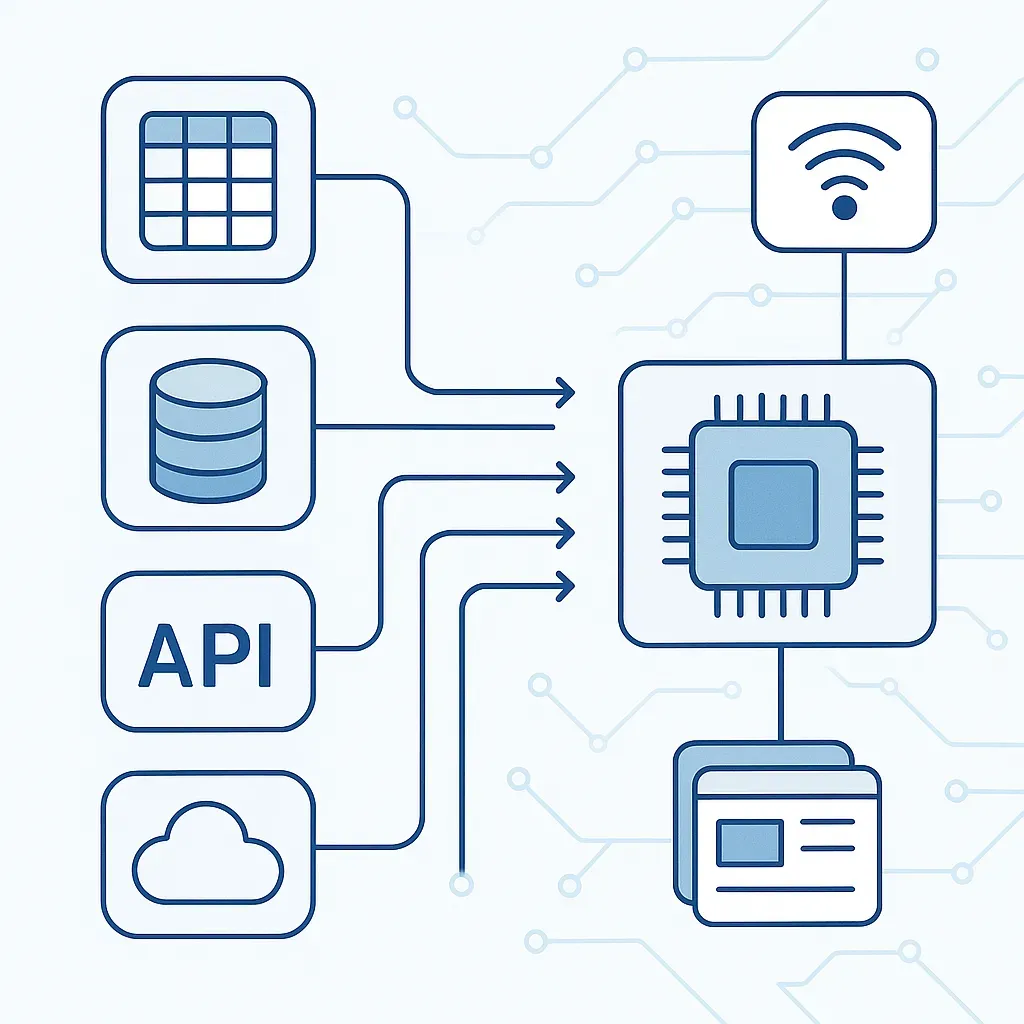
You need reliable, comprehensive data that updates regularly. Manual data entry defeats the purpose of automation.
Each page should answer a specific question or solve a particular problem. Generic pages rarely perform well.
Your website must handle thousands of pages without slowing down. Site speed affects both user experience and rankings.
Each page needs enough unique elements to justify its existence. Simple keyword swaps aren't sufficient.
Common Mistakes to Avoid
Pages that exist only to rank for keywords without providing value violate Google's guidelines. Focus on user needs first.
Large sites can become slow without proper optimization. Use caching, CDNs and efficient code to maintain performance.
Pages need connections to the rest of your site. Plan your site architecture before generating thousands of pages.
Templates must work well on all devices. Test your pages on phones and tablets before launching.
Automated systems can produce errors at scale. Build review processes to catch problems before they go live.
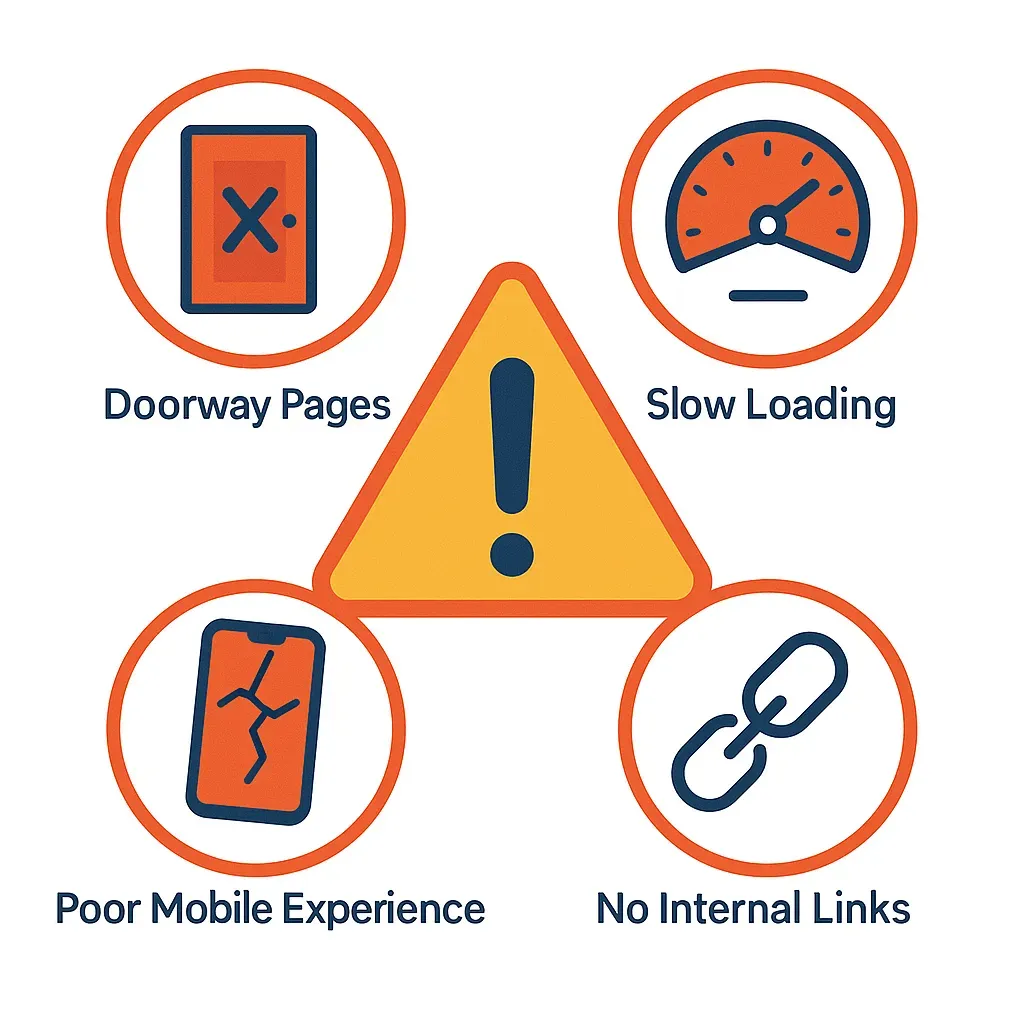
Getting Started with Programmatic SEO
Use keyword research tools to find patterns in your industry. Look for searches that follow similar formats.
Check what information you already have access to. Clean and organize it before building templates.
Create 10-20 pages manually first. This helps you understand what works before scaling up.
Develop your template system and generate a small batch of pages. Monitor their performance for several weeks.
Increase your page creation once you've proven the concept works. Add monitoring to catch issues early.
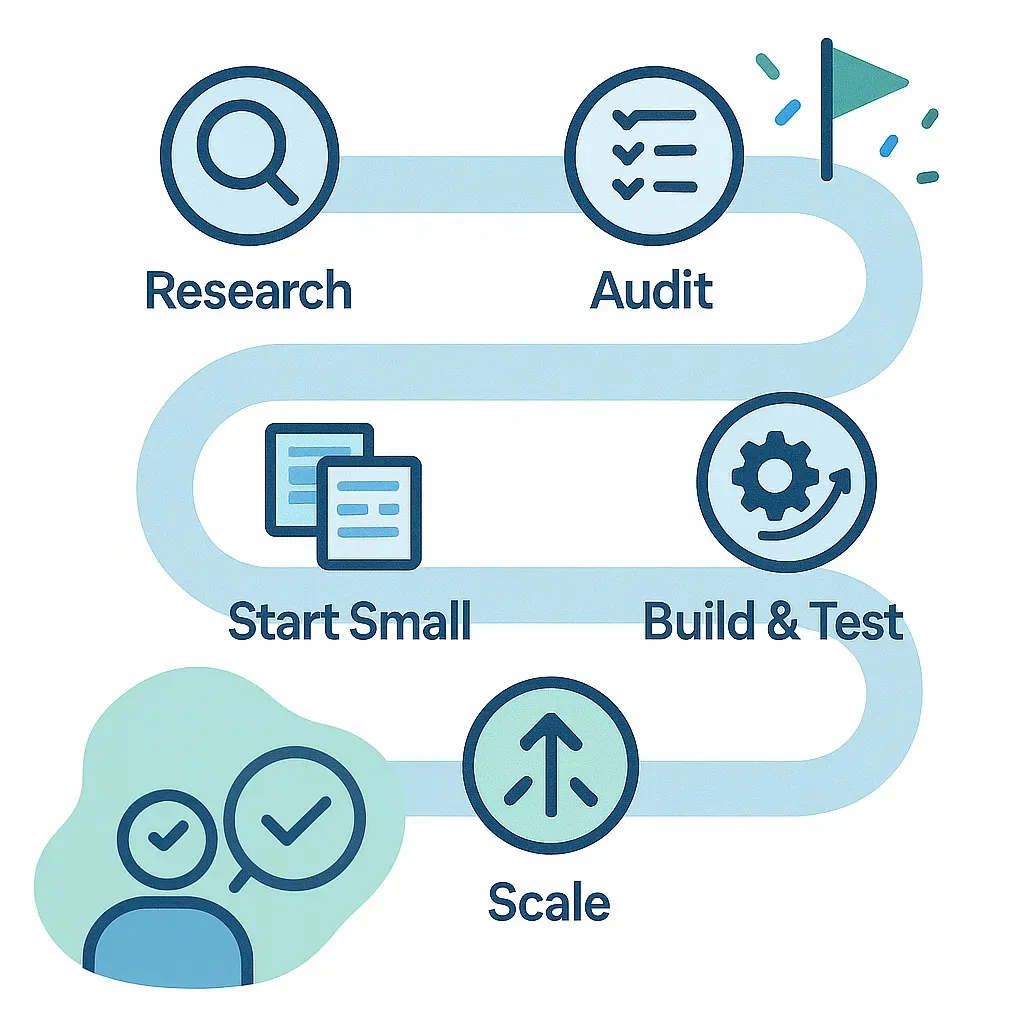
Measuring Success
Track these metrics to evaluate your pSEO performance:
- Organic traffic growth
- Keyword ranking improvements
- Conversion rates from programmatic pages
- Page load speeds
- User engagement metrics
- Technical error rates
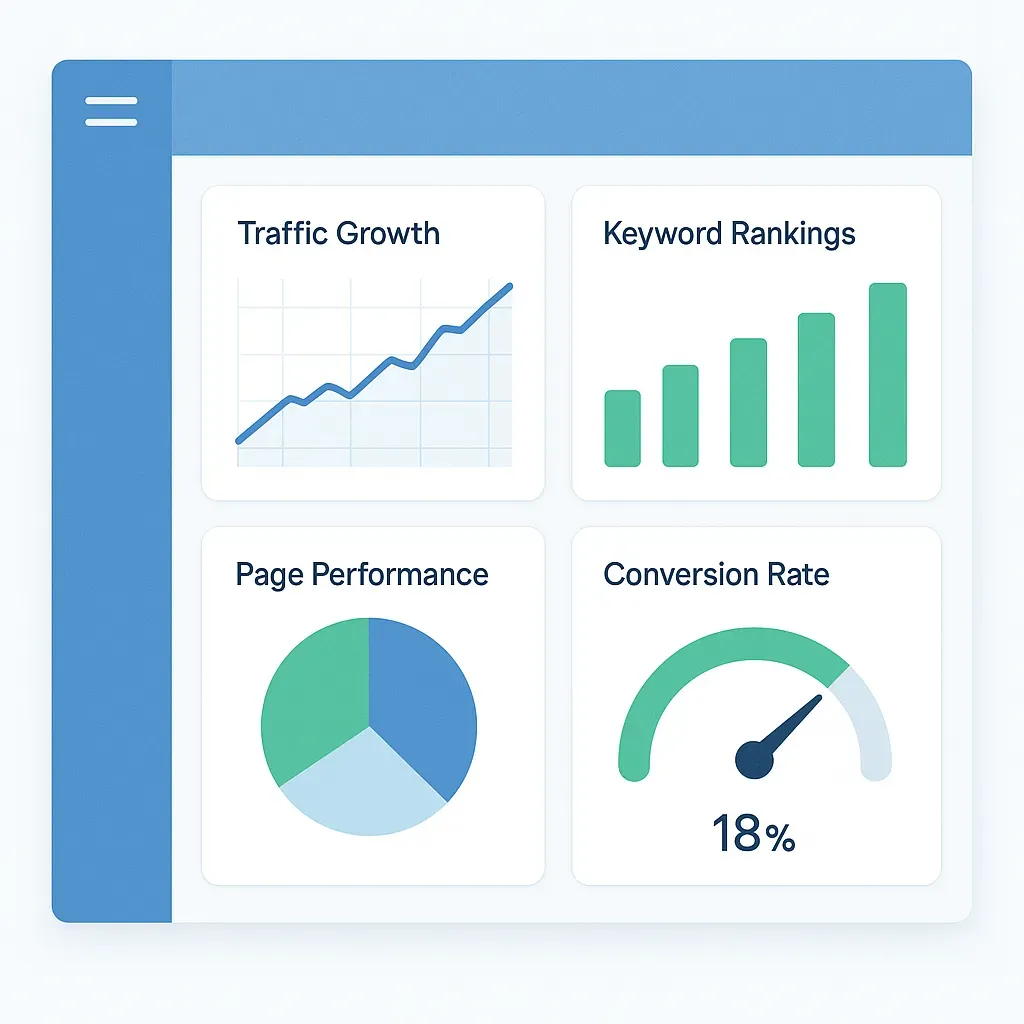
Regular monitoring helps you spot problems before they affect too many pages.
Learn More About Programmatic SEO
Ready to dive deeper? Check out these resources:
Programmatic SEO can transform how you approach content creation and organic growth. Start with solid foundations and scale carefully to avoid common pitfalls.